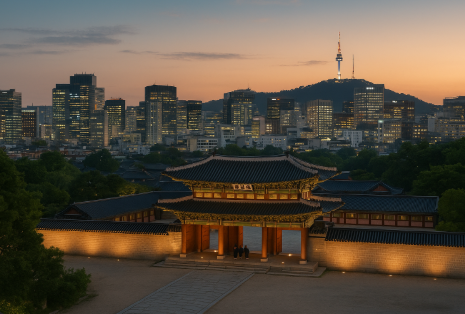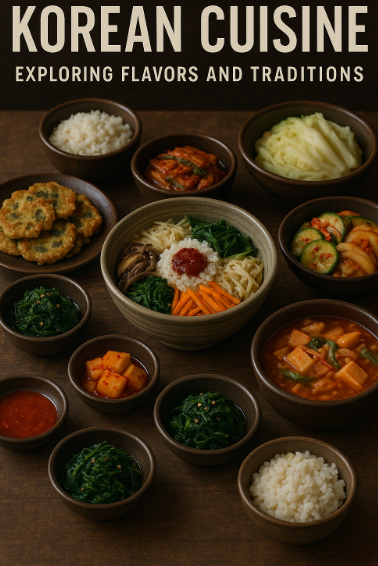Korean traditional theater offers a unique glimpse into the cultural and artistic history of Korea. With its distinct forms and styles such as Pansori, Talchum, and Madanggeuk, Korean theater is a wellspring of storytelling, music, and dance that has captivated audiences for centuries. In this article, we’ll explore the core elements that make Korean traditional theater a remarkable art form, its historical context, and its modern-day relevance.
Pansori: The Soulful Sound of Korea
Pansori is a traditional Korean genre of musical storytelling performed by a vocalist and a drummer. Originating in the 17th century, Pansori typically involves a single singer narrating a story with melodic intonation, expressive gestures, and varied vocal techniques.
The vocalist, or “sorikkun,” uses a wide range of expressions and vocal colors to portray multiple characters and emotions. The drummer, known as “gosu,” supports the singer with dynamic rhythms that emphasize the story’s dramatic arcs.
Pansori performances can last for hours, recounting epic tales from a repertoire known as the “Madang.” It has been recognized as a UNESCO Intangible Cultural Heritage, illustrating its importance and influence in Korean culture.
Talchum: The Mask Dance Drama
Talchum is a traditional Korean mask dance drama that combines lively dance, music, and satirical storytelling. Characterized by colorful masks and costumes, performers enact various roles to depict social themes and human follies.
Each mask symbolizes a specific character, social status, or personality trait. The stories often include themes of humor, rebellion against societal norms, and critique of authority. Events like the Bongsan Talchum are popular annual traditions where communities gather to witness these performances.
Through the centuries, Talchum has served as both entertainment and a reflective commentary on the social issues of the times. It remains a cherished part of Korean cultural heritage, showcasing the nation’s appreciation for performance art as a form of expression.
Madanggeuk: Theater in the Courtyard
Madanggeuk blends traditional Korean theater with modern elements to engage contemporary audiences. It is typically performed outdoors in a courtyard setting, creating an interactive experience between performers and the audience.
This form of theater draws on elements of humor, improvisation, music, and dance, similar to Talchum but with a more structured narrative. It often addresses modern themes and incorporates social commentary relevant to today’s sociopolitical context.
Madanggeuk creates a communal space where stories unfold in dynamic, participatory environments. It enriches Korean theater by rooting performances in local culture while embracing modern-day sensibilities.
The Evolution of Korean Traditional Theater
Over the centuries, Korean traditional theater has evolved by blending indigenous practices with foreign influences. Historical events, such as the Japanese occupation and subsequent modernization, impacted the trajectory of theater arts in Korea.
Unlike the rigid classical forms of some other nations, Korean theater has retained flexibility, allowing experimentation and evolution. This adaptability has helped it survive and thrive across diverse social, cultural, and historical landscapes.
Today, Korean traditional theater finds itself at the intersection of preservation and innovation, exemplifying both the deep-rooted cultural narratives and the forward-thinking perspectives of its society.
Modern-Day Relevance and Global Influence
Korean traditional theater continues to captivate not only domestic audiences but also international spectators. Globalization and the Korean Wave (Hallyu) have introduced these unique art forms to a broader audience worldwide.
The global interest in K-culture—spanning music, cinema, and drama—has opened new doors for Korean theater to be appreciated on international stages. Organizations are dedicated to preserving and promoting these traditional forms, ensuring their relevance in artistic and cultural discussions globally.
Cultural festivals and international tours spotlight Korean theater’s intricate beauty and diversity, enriching the global tapestry of performance arts with its vibrant stories and expressive artistry.
| Genre | Core Elements | Modern Influence |
|---|---|---|
| Pansori | Vocals, Drumming | Recognized by UNESCO, International Performances |
| Talchum | Dance, Masks, Storytelling | Cultural Festivals, Tourist Attractions |
| Madanggeuk | Theater, Audience Participation | Adaptation to Modern Themes |
Frequently Asked Questions
What makes Pansori unique?
Pansori is unique due to its combination of powerful vocal storytelling by a solo singer and dynamic percussion, creating immersive narratives.
How is Talchum different from other theater forms?
Talchum incorporates masks and dance to satirically address societal themes, often performed in a festive and interactive manner.
Why is Madanggeuk performed outdoors?
The outdoor setting of Madanggeuk encourages audience interaction, creating an immersive experience connecting viewers with the performance.
Summary
- ✅ Korean traditional theater combines music, dance, and storytelling.
- ✅ Pansori, Talchum, and Madanggeuk are key genres.
- ✅ These forms have evolved to blend tradition with modern influences.
- ✅ Global interest in Korean culture is boosting the popularity of its theater.
#Korea #KoreanTheater #Pansori #Talchum #Madanggeuk #TraditionalPerformingArts #CulturalHeritage #Storytelling #MusicAndDance #Hallyu #KoreanCulture #PerformanceArt #KoreanWave #UNESCO #CulturalFestival #GlobalInfluence #IntangibleCulturalHeritage #ArtAndCulture #KoreanDrama #Kculture #MaskDance #VocalArtistry #HistoricalDrama #Tradition #CulturalPreservation #ArtInnovation #KoreanStorytelling #FolkArt #Heritage

